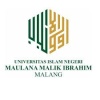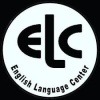THE EFFECT OF PAIR AND GROUP WORK IN COLLABORATIVE PRE-WRITING DISCUSSION ON STUDENTS’ WRITING QUALITY
Abstract
In foreign language writing classroom, collaborative pre-writing activity is one of common activities used by students to help them generate and evaluate their ideas before they write a text. A teacher usually assigns students to work in pairs or groups to accomplish the activity. However, whether the number of participants in collaborative pre-writing activity influenced the quality of students’ writing or not is still mysterious that need to be investigated further. This study tried to investigate the effect of the number of participants in collaborative pre-writing discussion on students’ writing quality. 30 participants from non-English department who were studying English as English Specific Purposes were involved in this study. They were required to write an explanation paragraph after being given a certain treatment. The result of the study revealed that the quality of students’ writing was not affected by the number of participants in collaborative pre-writing discussion. Therefore, the implication of the study is teacher can assign students to work collaboratively in pre-writing activity with two or more students. However, some factors need to be considered by teacher such as students learning style, the nature of task, etc.
Full Text:
PDFReferences
Al-Shaer, I. M. (2014). Employing Concept Mapping as Pre-Writing Strategy to Help EFL Learners Better Generate Argumentative Compositions. International Journal for the Scholarship of Teaching and Learning, 8(2)
Dobao, A. F (2012). Collaborative Writing Tasks in the L2 Classroom: Comparing Group, Pair, and Individual Work. Journal of Second Language Writing, 21, 40–58.
Dobao, A. F., & Blum, A. (2013). Collaborative Writing in Pairs and Small Groups: Learners’ Attitudes and Perception. System. 41, 365-378.
Ellis, R., & Yuan, F. (2004). The Effects of Planning on Fluency, Complexity, and Accuracy in Second Language Narrative Writing. Studies in Second Language Acquisition, 26, 59–84
Funes, M. R. (2015). Exploring the potential of second/foreign language writing for language learning: The effects of task factors and learner variables. Journal of Second Language Writing, 28, 1-19
Johnson, M. D & Mercado, L & Acevedo, A. (2012). The effect of planning sub-processes on L2 writing fluency, grammatical complexity, and lexical complexity. Journal of Second Language Writing 21, 264–282
Kucer, S. (2009). Dimensions of Literacy: A conceptual base for teaching reading and writing in school settings. (3rd Ed.). Mahwah, NJ: Erlbaum.
Lee, Y. (2013). Collaborative Concept Mapping as a Pre-Writing Strategy for L2 Learning: A Korean Application. International Journal of Information and Education Technology, 3(2)
Lasito & Storch, N (2013). Comparing Pair and Small Group Interactions on Oral Tasks. RELC Journal, 44(3), 361 –375
Mukminatien, N. (1997). The Differences of Students’ Writing Achievements Across Different Course Levels. Unpublished Dissertation. Malang: State University of Malang
Neumann, H & Mcdonough, K. (2015). Exploring Student Interaction during Collaborative Prewriting Discussions and its Relationship to L2 Writing. Journal of Second language Writing, 27, 84-104
Ong, J & Zhang, L. J. (2010). Effects of Task Complexity on the Fluency and Lexical Complexity in EFL Students’ Argumentative Writing. Journal of Second Language Writing, 19, 219-233
Peacock, M. (1999). A Useful and Popular Lesson? Comparing Students Working in Pairs and Threes in the ESL Classroom. RELC Journal, 29 (2)
Rao, Z (2007). Training in brainstorming and developing writing skills. ELTJ, 61 (2), 100-106
Richards, J. C & Renandya, W. A. (2002). Methodology in Language Teaching. Cambridge: University Press.
Seow, A. (2002). The writing process and process writing. Methodology in language teaching: An anthology of current practice, 315-320.
Servati, Ka (2012). Prewriting Strategies and their Effect on Student Writing. Education Masters. Paper 242.
Shi, L. (1998). Effects of prewriting discussions on adult ESL students’ compositions. Journal of Second Language Writing, 7, 319–345
Swain, M., & Lapkin, S. (1998). Interaction and second language learning: Two adolescent French immersion students working together. Modern Language Journal, 82, 320–337.
Widiati, U & Cahyono, B.Y. (2006). The Teaching of EFL Writing in the Indonesian Context: The State of the Art. Journal Ilmu Pendidikan, 13 (3), 139-150.
DOI: https://doi.org/10.18860/jeasp.v2i2.7782
Refbacks
- There are currently no refbacks.

This work is licensed under a Creative Commons Attribution-ShareAlike 4.0 International License.







Editorial Office:
Pusat Pengembangan Bahasa
Program Khusus Pengembangan Bahasa Inggris (PKPBI)
Universitas Islam Negeri Maulana Malik Ibrahim Malang
Gedung C lantai 1
Jl. Gajayana No 50 Kota Malang, Jawa Timur, Indonesia
Kode Pos 65144, Telp/Fax : (0341) 570872
Email: jeasp@uin-malang.ac.id
JEASP : Journal of English for Academic and Specific Purposes is licensed under a Creative Commons Attribution-ShareAlike 4.0 International











